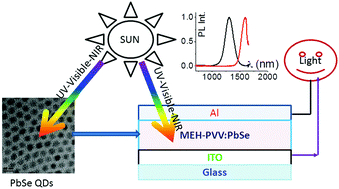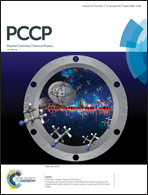Oleylamine as a reducing agent in syntheses of magic-size clusters and monodisperse quantum dots: optical and photoconductivity studies†
Abstract
Separation of magic size clusters (MSCs) from monodisperse quantum dots (QDs) has generally been a difficult task while employing the commonly used synthesis procedure, where for preparation of PbSe QDs, Se-TOP (TOP = trioctylphosphine) is injected into Pb-oleate in 1-octadecene medium. In this study, we report for the first time a simple method to prepare MSCs, QDs and particles close to the bulk of PbSe using oleylamine (OAM) as the reducing agent, where the individual entities are efficiently separated. The chemical yield is found to be 95%. Studies on optical properties revealed the absorption and emission peaks of MSCs at fixed positions of 600 and 780 nm, respectively, while QDs exhibit significant shift to longer wavelengths for both the cases, depending on the particle size. Shift of the emission peak position for QDs is observed to be larger for initial stages of the waiting time as compared to those for longer waiting times. This can be attributed to two factors: faster growth in particle size is favoured kinetically in the initial stages, while thermodynamic stability occurs in the later stages, and reduction in surface to core contribution with increase of waiting time. QDs were found to emit at only one particular wavelength while they absorbed at two or more wavelengths. The quantum yields (QYs) of particles of sizes 4.1 and 5.1 nm are found to be 80 and 30%, respectively. The lifetime values are found to be 1.0–1.3 μs for QDs having an emission peak in the range of 1300–1500 nm. The hybrid device of PbSe (5 nm size) and MEHPPV (2-methoxy-5-(2′-ethyl-hexyloxy)-1,4-phenylene vinylene) shows increased conductivity both in the dark and in light, due to absorption in the region of NIR photons in the former and additionally in the visible region in the latter.


 Please wait while we load your content...
Please wait while we load your content...